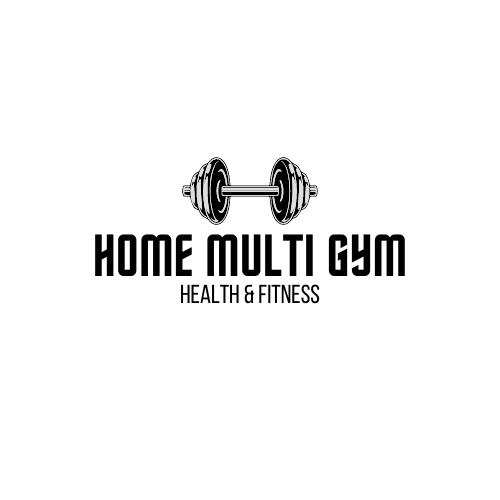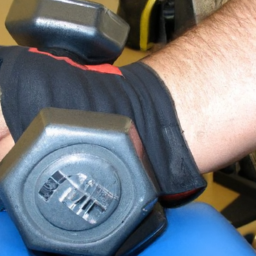Hey there! If you’re wondering about the safety measures to prevent injury while using a home multi-gym, you’ve come to the right place. It’s important to prioritize your safety when working out at home, and being aware of the precautions to take can make a big difference.
In this article, we’ll delve into the various safety measures you can implement to minimize the risk of injury while using a home multi-gym. From important equipment checks to proper form and technique, we’ll cover it all. So, whether you’re a seasoned fitness enthusiast or just starting out, stay tuned to learn some valuable tips and tricks to keep yourself safe and injury-free during your home workouts. Your well-being matters to us, and we’re here to help you make the most of your exercise routine in a safe and enjoyable way.
Understanding the Potential Risks of Home Multi-gyms
While home multi-gyms offer convenience and accessibility for individuals looking to stay fit and build muscle, it’s important to understand the potential risks associated with using these machines. Without proper precautions and safety measures, injuries can occur, hampering your fitness journey and even causing long-term damage to your body. This article will delve into the common types of injuries, the importance of safety measures, and tips for maintaining a safe workout environment.
Identifying the Common Types of Injuries
Before discussing safety measures, it’s crucial to be aware of the common types of injuries that can occur while using a home multi-gym. These injuries can range from minor sprains and strains to more severe muscle tears and fractures. Some of the most commonly reported injuries include:
-
Strained muscles: Overexertion or improper technique can lead to muscle strains, which can cause pain and reduce your ability to perform exercises.
-
Joint injuries: Poor posture or excessive weight lifting can put stress on your joints, leading to injuries such as sprains or dislocations.
-
Fractures: If the equipment is not properly set up or if you attempt to lift weights beyond your capability, you risk a fracture, especially in your wrists or spine.
-
Pinched nerves: Poorly adjusted equipment can compress nerves, leading to pain and tingling sensations in your extremities.
-
Back and spine injuries: Incorrect form or excessive strain on your lower back can result in injuries such as herniated discs or muscle spasms.
By being aware of these potential injuries, you can take appropriate measures to prevent them and ensure a safe workout experience.
Recognizing the Importance of Safety Measures
To minimize the risk of injury while using a home multi-gym, it is essential to recognize the importance of implementing safety measures. These measures not only protect you from harm but also enhance the effectiveness of your workouts. By adhering to the following guidelines, you can significantly reduce the chances of getting injured:
-
Proper warm-up and cool-down: Engaging in a proper warm-up routine before exercising helps prepare your muscles and joints for the upcoming workout, reducing the risk of strains and sprains. Similarly, cooling down after your workout allows your body to gradually return to its resting state, promoting recovery.
-
Progression and gradual increase in intensity: It is vital to progress gradually when using a home multi-gym. Start with lighter weights or resistance and gradually increase the intensity as your strength and fitness levels improve. This gradual progression allows your muscles and connective tissues to adapt and reduces the likelihood of overexertion and injury.
-
Maintaining correct form and technique: Proper body mechanics and technique are crucial to prevent injuries. If you are unsure about the correct form for an exercise, consider consulting a fitness trainer or watching instructional videos to ensure you are performing each movement correctly.
Ensuring Proper Equipment Selection and Setup
One of the primary steps to prevent injury while using a home multi-gym is selecting reliable and sturdy equipment. Additionally, setting up the equipment correctly according to the manufacturer’s guidelines is essential for your safety. Here are some tips to consider:
Choosing a Reliable and Sturdy Home Multi-gym
When purchasing a home multi-gym, prioritize quality and durability. Look for well-known brands that have a reputation for producing reliable and high-quality equipment. Research customer reviews and ratings to ensure the product meets your expectations.
Following Manufacturer’s Guidelines for Assembly
Proper installation and assembly of the home multi-gym are critical to its safety and functionality. Carefully read and follow the manufacturer’s guidelines for assembly. This will ensure that all components are securely attached and reduce the risk of the equipment malfunctioning during your workouts. Additionally, regularly check for loose bolts or parts and tighten them as necessary to maintain the equipment’s stability.
Learning Proper Body Mechanics and Technique
Even with the right equipment and setup, using a home multi-gym improperly can still lead to injuries. Therefore, understanding and practicing proper body mechanics and technique are essential for injury prevention. Consider the following tips:
Receiving Professional Guidance on Exercises
If you are new to using a home multi-gym, consider working with a certified fitness trainer or physical therapist who can guide you through proper exercise techniques. They can teach you how to perform exercises correctly, help you understand the appropriate range of motion, and provide modifications based on your fitness level and any pre-existing conditions you may have.
Understanding the Correct Posture and Movement
Learning the correct posture and movement patterns is crucial to prevent injuries while using a home multi-gym. Maintain a neutral spine, engage the core muscles, and avoid excessive arching or rounding of the back. Ensure that your movements are smooth, controlled, and within a pain-free range of motion. By paying attention to your body’s alignment and movement, you can minimize the risk of strain and injury.
Using Safety Features and Accessories
Home multi-gyms often come equipped with safety features and accessories that can enhance your workout experience and minimize the risk of injury. Here are some examples to consider:
Utilizing Built-in Safety Locks and Brakes
Some home multi-gyms feature built-in safety locks and brakes that can prevent the weight stack or resistance from falling abruptly. Familiarize yourself with these safety features and ensure they are engaged whenever you are not actively using the equipment. This adds an extra layer of protection and peace of mind.
Using Protective Gear and Equipment
In addition to the safety features of the multi-gym itself, consider using additional protective gear and equipment. For example, wearing proper footwear with good stability and support can help prevent slips or falls. If you are performing exercises that require wrist support, consider using wrist wraps or braces. Protective padding or mats can also be used to reduce the impact and stress on your joints and muscles.
Implementing Regular Maintenance and Inspection
To ensure the ongoing safety and functionality of your home multi-gym, make a habit of regular maintenance and inspection. Some important steps to consider are:
Checking for Loose Bolts and Parts
Regularly inspect your home multi-gym for any loose bolts or parts. Over time, the vibrations and movement can cause certain components to become loose. Tighten them as necessary to maintain the stability and safety of the equipment.
Cleaning and Lubricating Moving Components
Dirt, dust, and sweat can accumulate on the moving components of your home multi-gym, potentially impairing their functionality. Regularly clean the equipment using manufacturer-approved cleaning solutions and ensure that all moving parts are adequately lubricated. This minimizes friction and wear, helping to maintain the smooth and safe operation of the machine.
Creating a Safe Workout Environment
Apart from the equipment itself, creating a safe workout environment plays a significant role in injury prevention. Consider the following factors:
Clearing the Surrounding Area of Obstacles
Ensure that the area around your home multi-gym is clear of any obstacles or clutter. Remove loose objects, furniture, and anything that can obstruct your movement or cause accidents. This reduces the risk of tripping or bumping into something while performing exercises.
Ensuring Sufficient Lighting and Ventilation
A well-lit workout area allows you to see your surroundings clearly, minimizing the risk of accidents. Additionally, proper ventilation helps maintain a comfortable workout environment by preventing excessive heat buildup. Ensure that you have sufficient lighting and consider opening windows or using fans to improve airflow.
Listening to Your Body and Avoiding Overexertion
Listening to your body and avoiding overexertion are crucial aspects of injury prevention while using a home multi-gym. Pay attention to the following:
Recognizing Signs of Fatigue and Discomfort
Pay close attention to any signs of fatigue or discomfort during your workouts. Pushing through intense pain or ignoring warning signs from your body may lead to further injury. If you experience persistent pain, joint instability, or extreme fatigue, it’s essential to stop exercising and consult a healthcare professional.
Taking Adequate Rest and Recovery
Allowing your body sufficient time to rest and recover between workouts is crucial for injury prevention. Overtraining or not giving your muscles and connective tissues enough time to repair and rebuild can increase the risk of strains and injuries. Incorporate rest days into your workout routine and prioritize sleep to aid in recovery.
Seeking Professional Assistance and Supervision
While home multi-gyms offer convenience and flexibility, it is always beneficial to seek professional assistance and supervision, especially if you are new to strength training. Consider the following:
Consulting a Fitness Trainer or Physical Therapist
A fitness trainer or physical therapist can provide expert guidance on how to use your home multi-gym safely and effectively. They will be able to design a customized workout program based on your individual needs and goals, teach you proper technique, and ensure that you progress at a suitable pace. Additionally, they can help identify any muscle imbalances or movement dysfunctions that may increase your risk of injury.
Having a Spotter or Workout Partner
If you are performing exercises that involve heavy weights or more advanced movements, having a spotter or workout partner can provide an extra layer of safety. A spotter can assist with lifting and ensure that you maintain proper form throughout your sets. They can also provide feedback and help prevent any potential accidents.
Educating Yourself on Potential Dangers and Solutions
Remaining informed about potential dangers and solutions is an important aspect of preventing injuries while using a home multi-gym. Stay updated on the following:
Staying Informed about Recent Safety Warnings or Recalls
Manufacturers occasionally issue safety warnings or recalls for specific home multi-gym models. Stay informed about these updates by regularly checking the manufacturer’s website or subscribing to their newsletters. This will allow you to address any safety concerns promptly and take appropriate action.
Researching and Understanding Injury Prevention Techniques
Educate yourself on injury prevention techniques specific to home multi-gyms. Read articles, watch instructional videos, and consult reputable sources to learn about proper exercise form, muscle activation, and injury prevention strategies. The more you understand the principles of safe and effective training, the better equipped you will be to prevent injuries.
Conclusion
Prioritizing safety while using a home multi-gym is crucial for maintaining an enjoyable, effective, and injury-free workout experience. By identifying potential risks, implementing safety measures, ensuring proper equipment selection and setup, using correct body mechanics and technique, utilizing safety features and accessories, implementing regular maintenance and inspection, creating a safe workout environment, listening to your body, seeking professional assistance and supervision, and educating yourself, you can significantly reduce the risk of injury and maximize the benefits of your home multi-gym workouts. Remember, safety should always be your primary concern to ensure a long-lasting and enjoyable fitness journey.

